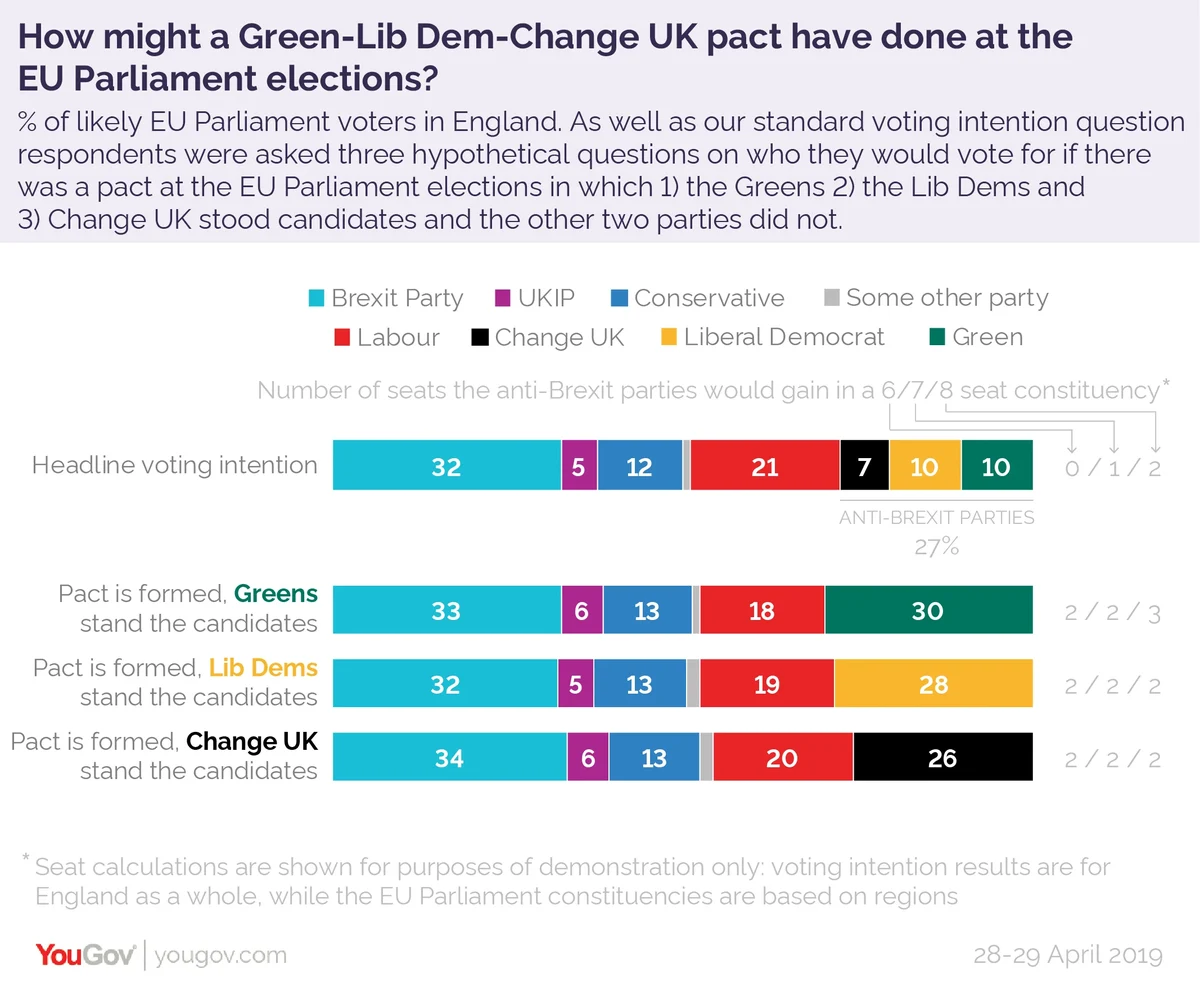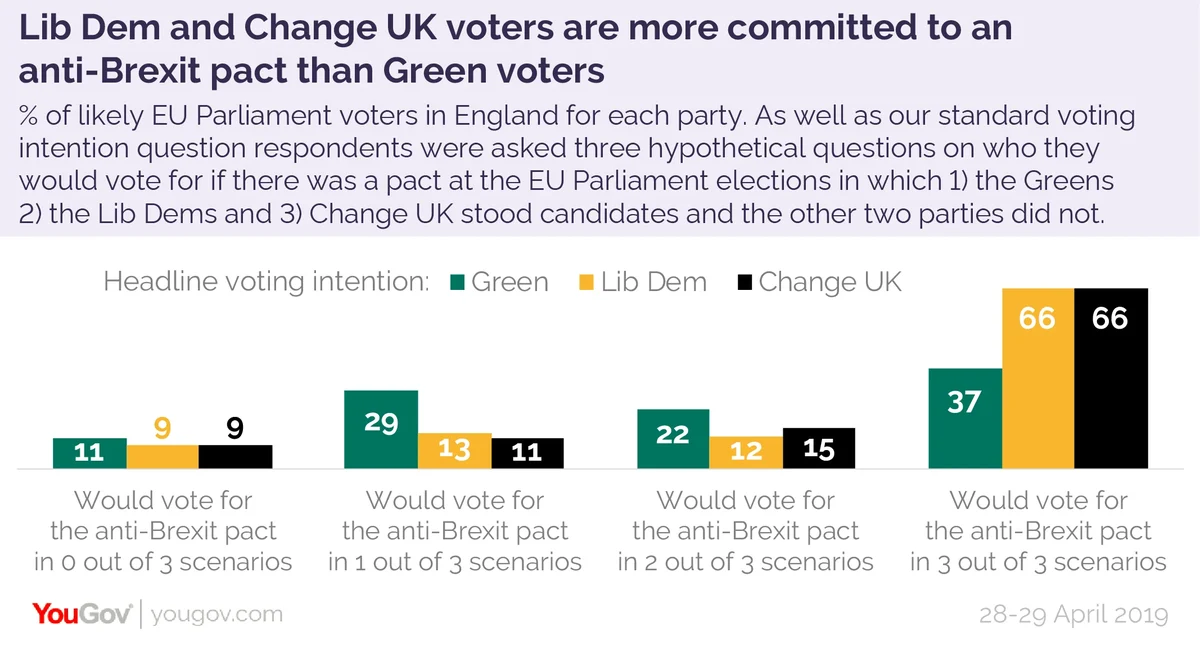YouGov reveals how well the anti-Brexit parties could perform if they stood under one banner on 23 May
To the dismay of many Remainers, Britain’s anti-Brexit parties will not form a united front at the forthcoming EU parliament elections. Writing in the Independent last month, Change UK MP Chuka Umunna laid the blame primarily on the requirement for parties to merge in order to run a unified list of candidates.
Regardless of the motivations behind anti-Brexiters’ inability to stand together, the failure to do so could cost their cause dearly in terms of European Parliament seats.
In a successor survey to our 2017 study looking at how a ‘progressive alliance’ would do at a general election, YouGov has examined how well an anti-Brexit pact would perform at the EU elections.
In a standard European Parliament voting intention survey conducted on 28-29 April, the results for England only* saw the Brexit Party on 32%, Labour on 21%, the Conservatives on 12%, the Greens and Lib Dems on 10% each, Change UK on 7% and UKIP on 5%.
We then asked three further hypothetical voting intention questions. In each question respondents are told that a pact has been formed between the Greens, Lib Dems and Change UK, with one of the three parties standing candidates and the other two not standing their own candidates.
The results show that when the Greens are standing pact candidates it receives 30% of the vote, 28% when they are the Lib Dems and 26% for Change UK.

On the face of it this might not seem to be much of a difference, given that the three parties collectively receive 27% of the vote standing separately in our standard question. But because of the way that seats are allocated under the electoral system we use for European Parliament elections (known as the d’Hondt method), it could have had pretty big implications.
For instance, if our current all-England headline results were replicated in a six-seat constituency the Brexit Party would win three seats, Labour two and the Conservatives one. If instead an anti-Brexit pact were agreed between the Greens, Lib Dems and Change UK, then based on our current figures those parties would potentially take two of the six seats (with the Brexit Party taking two and Labour and the Conservatives taking one each).
Please note that these seat calculations are shown for purposes of demonstration only: our voting intention results are for England as a whole, while the EU Parliament constituencies themselves are based on regions.
| Number of seats in constituency | 3 | 5 | 6 | 7 | 8 | 10 |
|---|---|---|---|---|---|---|
Anti-Brexit seats without pact | 0 | 0 | 0 | 0 | 2 | 2 |
Anti-Brexit seats with pact | 1 | 1-2 | 2 | 2 | 2-3 | 3 |
In fact, were the headline and hypothetical votes to be replicated in constituencies of 3-7 seats it would be the difference between the anti-Brexit parties getting any seats or none.
Lib Dem and Change UK voters are more committed to an anti-Brexit pact
The results show that Green voters are less enamoured with an anti-Brexit alliance than those from the other parties – only 37% would support a pact whichever party was the face of it, compared to 66% among Lib Dem and Change UK voters.

While 85% of Green voters would back the pact if their party was standing the candidates, this figure falls to 56% when it is led by the Lib Dems and 45% were Change UK to be the face of the alliance. By contrast, 76% of Lib Dems are happy to vote for a Green-led pact, as are 73% of Change UK voters.
Although an anti-Brexit pact does lose a small number of Green/Lib Dem/Change UK voters, it does also attract some 13-17% of those who would otherwise have voted for the Labour party.
*Due to the more complicated dynamics that the SNP and Plaid Cymru introduce in Scotland and Wales, as well as the small sample for those respective nations, this article looks at the England data only
Photo: Getty






